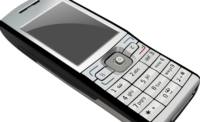 ISHN Chief Editor Dave Johnson reporting live from AIHce 2013:
ISHN Chief Editor Dave Johnson reporting live from AIHce 2013:
Dr. L. Casey Chooswood, MD’s presentation at the Wednesday morning kick off session was an introduction to one of NIOSH’s prized projects, in line with NIOSH boss Dr. John Howard’s vision for the future, namely Total Worker Health™.
What is it?
Traditionally, workplace health and safety programs have been compartmentalized. Big surprise, eh?
Safety protection programs have focused on what else, safety, with the health component reducing worker exposures to risk factors arising in the work environment.
At most workplaces health promotion programs focus on employee lifestyle factors off-the-job that place workers at risk. Recent research supports combining these efforts through workplace interventions that integrate health protection and health promotion programs. The worker is completely, totally covered, 24/7/365.
Total Worker Health™ is indeed an incredibly broad concept for safety and health pros to study and consider ways of implementing DIY versions in their workplaces.
Think about the ways these employment issues affect the physical and psychological well-being of your workers, and your organization’s bottom line
- Competition for Workers, Products, Services, Knowledge
- Rising Health Care Costs
- Eroding Distinction Between Work-Related and Non-Work-Related Conditions
- Presenteeism
- Absenteeism
- Requirements of the Americans with Disabilities Act related to Wellness & Health Promotion Programs
- Changing norms and policies regarding retirement age
Employees, especially aging workers, can benefit from Total Worker Health™ initiative relating to these prevalent chronic health conditions:
- Obesity
- Arthritis
- Hypertension/CVD
- Diabetes
- Hyperlipidemia
- Depression/Anxiety
- Stress
- Sleep & Fatigue Issues
Health promotion at work can be target at these areas:
- Smoking Cessation
- Diet and Nutrition
- Physical Activity
- Stress Management & Resiliency
Total Worker Health™, touching on so many aspects and operations of an organization, can lead directly to the building of a culture of safety. In fact, it must to remain sustainable.
Opportunities:
- Promote Safe Environment
- Safety Culture
- Safety Decision Making
- Increased Hazard Recognition
- Promote Health and Wellness Culture
- Leadership Support
- Worker Involvement
- Health in All Decisions
Interventions consistent with Total Worker Health™ include but are not limited to:
- Provision of mandated respiratory protection programs that simultaneously and comprehensively address and provide supports for tobacco cessation.
- Integrated ergonomic consultations that also discuss joint health and arthritis prevention and management strategies.
- Regularly scheduled, joint meetings of safety, occupational health and health promotion leadership and staff to include combining the functions of safety, health, and/or sustainability committees into one entity, either intermittently or permanently.
- Development of stress management efforts that first seek to diminish workplace stressors, and only then work on building worker resiliency.
- Implementation of training and prevention programs that counter hazards and risks faced by workers both on and off the job. Topics could include falls prevention, motor vehicle safety, first aid, hearing conservation, stretching/ flexibility, back safety/ lifting safety, eye protection, safer work with chemicals, and weight management.
- Provision of onsite, comprehensive workplace screenings for work and non-work related health risks.
- Exploration of models that combine occupational health services with workplace primary care.
- Full integration of: traditional safety programs, occupational health clinics, behavioral health, health promotion programs, coaching, EAP, nutrition, disability and workers compensation through strategic alignment, joint reporting structures or common funding streams.




